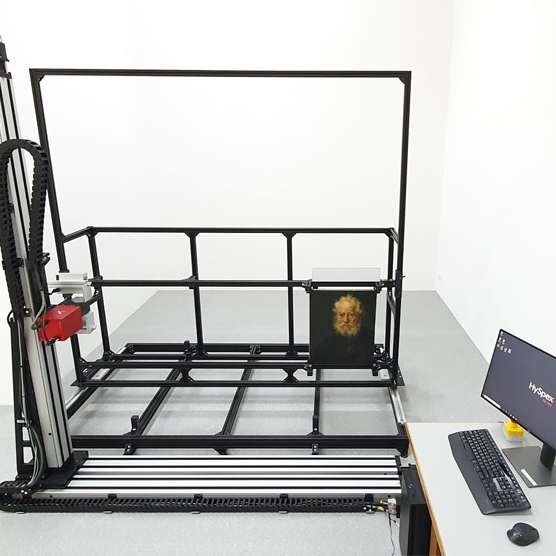NEO was contracted by C2RMF1 (Le Centre de recherche et de restauration des musées de France) at the Louvre Museum in Paris to develop a novel instrument system for hyperspectral imaging of large paintings and other pieces of art. The system was installed at C2RMF’s location in early 2011.
The system used by C2RMF is based on NEO’s well proven HySpex VNIR-1600 combined with a large (100cm*150cm) horizontal and vertical scanning stage, a fiber optic light source and a high resolution line scan camera yielding a scene pixel size of approximately 12μm at 30cm object distance. The setup is compatible with all HySpex cameras and can be delivered in both multi- and single-camera configurations to cover the desired spectral range.
As a part of NEO’s on-site installation and training session, the system proved to be a very useful tool providing stunn ing images and revealing previously unknown features of old paintings (see picture).
ing images and revealing previously unknown features of old paintings (see picture).
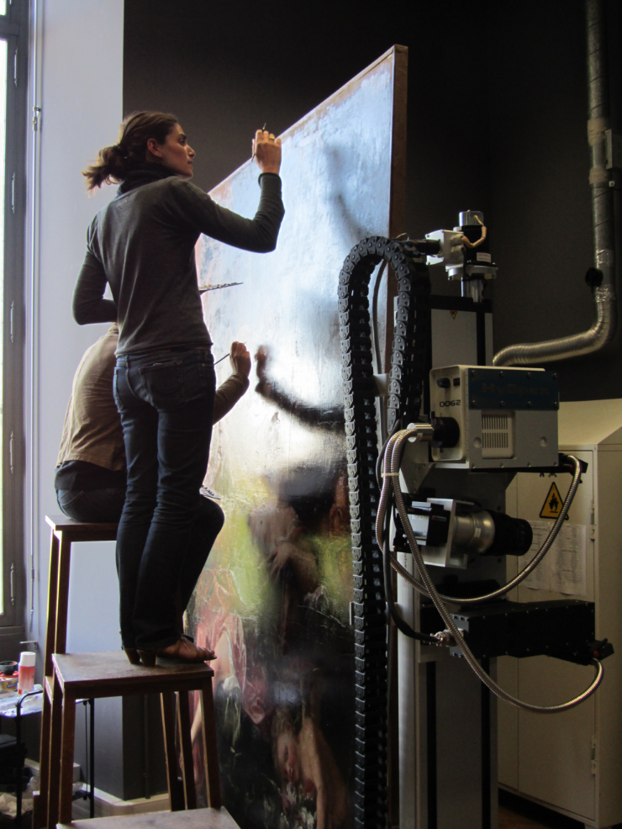
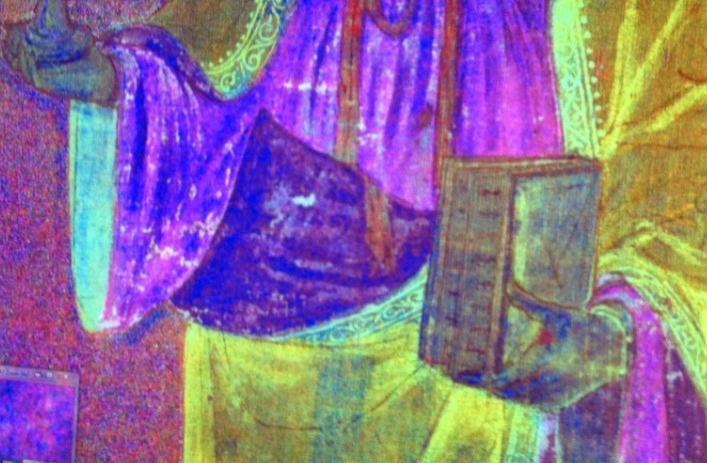
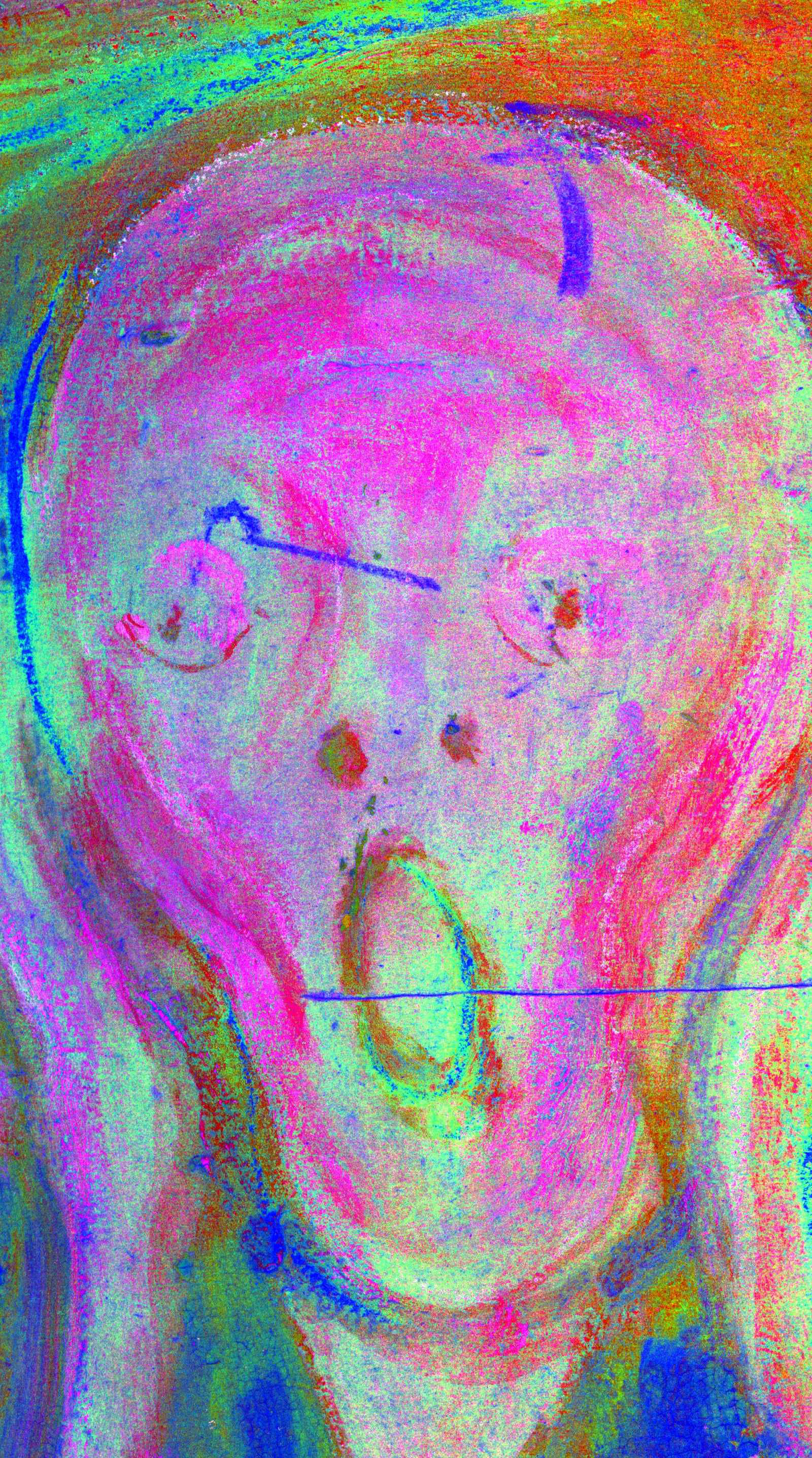
The setup can easily be employed for other applications involving scanning of large vertically oriented objects such as buildings, plants, rocks, and even humans. By using the custom made HySpex close-up lenses, the instrument can be adjusted to the desired object distance.
Using the Art Scanner, a group of researchers from the Norwegian Colour and Visual Computing Laboratory at NTNU carried out a pigment mapping of the constituent pigments of Edvard Munch's The Scream (1893).
The HySpex Art Scanner has later been adapted to hold both VNIR and SWIR cameras and is being used by conservation offices and museums worldwide. The stage is designed to accommodate any two HySpex hyperspectral cameras and illuminations units. The art scanning stage can be fixed to the ground. The painting mounting frame allows for mounting paintings in frames up to 1.9m high and 2m wide. The frame allows for manual adjustment of the distance between the painting and the instrument from 30cm to 1m, depending on a selected lens and required spatial resolution
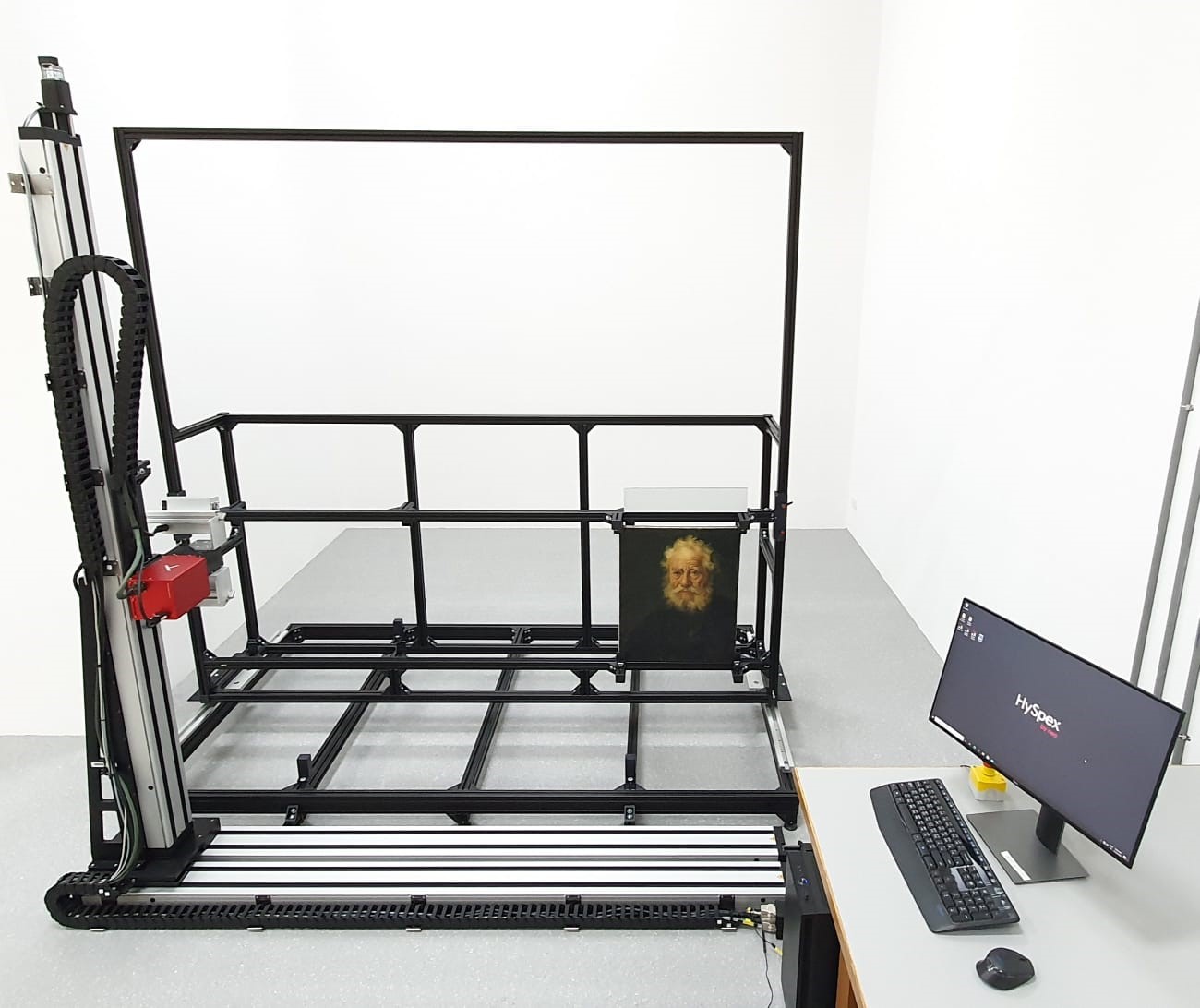
- C2RMF is responsible for documentation, conservation and restoration of the items held in the collections of more than 1,200 museums across France. The C2RMF is involved in the development of technologies and scientific procedures employed in the preservation of art works, both on its own and in partnership with other museums and research institutions across the globe. Hyperspectral imaging is a project of the Archives and New Technologies department in association with the Restoration department. For more information on the center see http://www.c2rmf.fr. For more information on the hyperspectral imaging project, see http://merovingio.c2rmf.cnrs.fr/technologies/.

